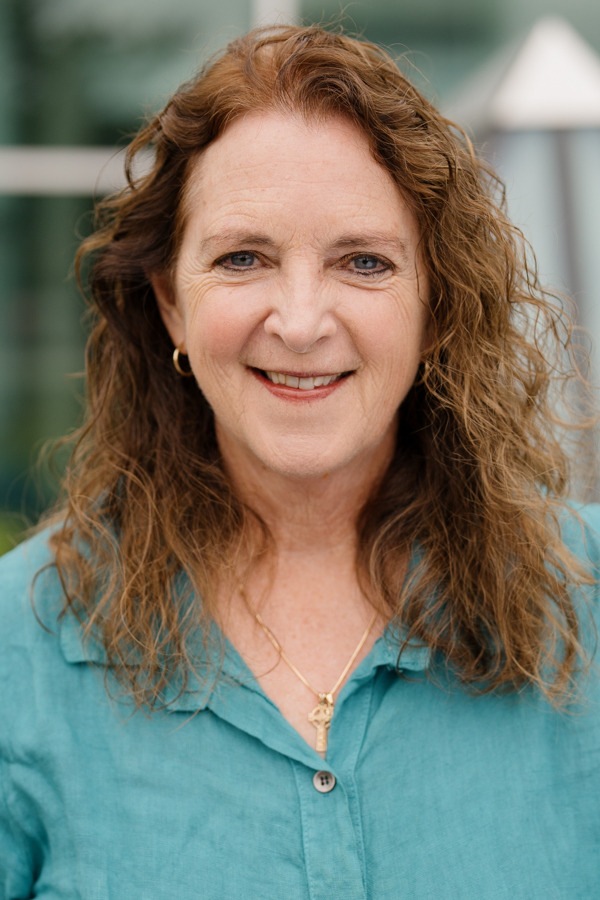Along with the Annunciation and Mary’s Visit with Elizabeth (Lk 1:26-44), the Magnificat (Lk 1:46-55) portrays Mary as a young Jewish woman of extraordinary faith. In this hymn of praise, or Mary’s Song, she delights not only in the mighty things God has done for her personally; she also places her own astounding news, that she will bear Jesus, “the Son of the Most High” (v. 32), in its wider context of salvation history. (She revels in the God who has remembered his servant Mary and his servant Israel, thereby acting in accordance with his covenant promise.)
Within the Magnificat, a key facet of Lukan theology is the dramatic reversal in God's action on behalf of his people. Evoking strong imagery from the Exodus, Mary declares that God scatters the proud, brings down rulers, and lifts up the lowly (vv. 51-52). He fills the hungry with good things and sends the rich away empty (v. 53). Indeed, theologian Hans Urs von Balthasar notes that Mary’s Song “talks of practically nothing other than this inversion of earthly circumstances in which one recognizes the action that characterizes God.” 1
This theme of reversal is inherent in the gospel of Jesus Christ. Yet how and where do we see such striking reversals, or paradigm shifts, in our world today? And what are the implications for us as followers of Jesus in the twenty-first century?
Perhaps the iconic image of the "Blue Marble" may serve as a symbol of the astonishing developments in our perception of the world over the past century. Transmitted on Christmas Eve in 1972, this photo, universally known as the "Blue Marble," was the first ever portrait of our planet, depicting Earth as a vivid globe with deep blue oceans set against the inky blackness of space and white clouds swirling over the vast continent of Africa and the south pole. It is among the most reproduced photos of all time, and over fifty years later its power of inspiration and influence remain.
Drawing these two icons together, I suggest that developments in world Christianity over the past century reflect dramatic and revolutionary reversals akin to Mary’s proclamation in the Magnificat, and akin to the "Blue Marble" photo inspiring shifts in our perspective on planet Earth today. Astronauts at the time spoke of how they felt a far deeper sense of awe and a heightened protectiveness towards our tiny spherical home in the vast galaxies, appearing so exquisite and delicate with its thin atmosphere.
Equally stunning are the new scenarios emerging within world Christianity over the past century. While the term speaks for itself, the study of world Christianity investigates “Christian communities, faith, and practice as they are found on six continents, expressed in diverse ecclesial traditions, and informed by the multitude of historical and cultural experiences in a world transformed by globalization.” 2 Attending to both the fundamental unity and the enormous diversity of local expressions of Christianity around the globe, studies in world Christianity focus particularly on those that have been underrepresented in scholarship, including the experiences of marginalized communities, the poor, and women. From this rising tide of scholarship over recent decades, three observations suffice to illuminate the theme of gospel reversal.
First, most obviously, is the changing face of world Christianity. Whereas in 1900, approximately 83 percent of the world’s Christians lived in the northern regions of Europe, Russia, and North America, by 2000, over half the Christians lived in the southern regions of Africa, Asia, Latin America, and Oceania. Hence historian Andrew Walls’s observation in 1976, regarding “a complete change in the center of gravity of Christianity,” 3 has entered common parlance among Christians today. Yet the realities of this reversal are difficult to grasp. Historian Mark Noll provides helpful snapshots of this shift, pointing out that on the previous Sunday, “more Chinese believers were in church than in all of so-called ‘Christian Europe,’” despite there being no legal churches in China as recently as 1970. 4 Moreover, a greater number of Anglicans attended church in each country of Nigeria, Kenya, Uganda, Tanzania, and South Africa than the number of Anglicans in Britain and Episcopalians in the United States combined. The largest churches in Europe had mostly black congregations, and members of the Pentecostal Assemblies of God in Brazil outnumbered the combined total of the two largest Pentecostal denominations in the United States.
While this sea change in the demographics of twenty-first-century world Christianity is staggering, it also recovers and reflects the true nature of the Christian faith in being universal. As Walls underlines,
Christianity has always been universal in principle. ... But it is only in recent Christian history that Christianity can be said to have become universal in practice. ... Christians form a substantial presence in every continent, and according to one recent survey are to be found in every one of the world’s 233 nations. This is not only unique among the world’s religions; it is a new feature for the Christian faith itself. 5
In other words, this revolutionizing shift in the composition of global Christianity today goes beyond demographics to encompass our understanding of and engagement with the Christian faith itself. It has far-reaching implications for theology and theological education, church practice, and participation in God’s mission. For example, John Mbiti, considered the father of modern African theology, calls for greater theological mutuality and reciprocity among theologians globally, voicing the lament of many majority world theologians:
Theologians from the new (or younger) churches have made their pilgrimages to the theological learning of older churches. ... We have eaten theology with you; we have drunk theology with you; we have dreamed theology with you. But it has all been one-sided; it has all been, in a sense, your theology. ... We know you theologically. The question is, do you know us theologically? Would you like to know us theologically? 6
Clearly, twenty-first-century world Christianity beckons us to engage more fully with one another within the global Body of Christ.
A second, related observation reminiscent of the Magnificat concerns the shifting dynamics within world Christianity. According to the New Testament scholar Raymond Brown, Mary herself embodies, and the Magnificat vocalizes, the piety of the Jewish Christian “Anawim.” This is the plural Hebrew word for “poor, humble, afflicted,” whom Brown describes as extending beyond the physically poor to refer more widely to those who could not trust in their own strength but had to rely in utter confidence upon God: the lowly, the poor, the sick, the downtrodden, the widows, and orphans. 7 The opposite of the Anawim were not simply the rich, but the proud and self-sufficient who showed no need of God or his help.
Just as Mary experienced and celebrated God exalting the lowly as part of his divine reversal, so today we are witnessing the flourishing of Christianities at the margins, so to speak. With the demise of the dominant Christendom model of Christianity, in which the Christian faith has been considered primarily a Western European religion associated with wealth and power, a significant shift has taken place in recent decades. Irvin notes, from a statistical perspective, the average Christian is now better represented as living in São Paulo, Dar es Salaam, or Manila rather than in Rome, Geneva, or London. The forms of expression that Christian faith takes in day-to-day practice, the ideas that people have of what it means to be a faithful disciple of Jesus Christ, and the languages they use to express themselves in worship and salvation are proliferating beyond those of European Christian descent. A new world Christian reality has emerged. 8
Within this new Christian reality, those who have been previously marginalized are now making crucial contributions to the global Body of Christ. In particular, the voices of women have risen significantly in theology and mission, even as many continue to face gender oppression within the church and society. For example, in 1989, Mercy Oduyoye founded the Circle of Concerned African Women Theologians, which draws together women leaders, both academic and at the grassroots, to identify and reflect theologically upon issues affecting women (and therefore men) across Africa. Likewise, ethnic minorities in North America and indigenous peoples around the world are increasingly contributing significantly to the global church and to the ongoing development of Christian tradition.
Finally, developments in world Christianity are expanding our understanding and practice of world mission. In the Magnificat, Mary rejoiced in God remembering his promise to Abraham and to Abraham’s descendants forever. This covenant between God and his people, both the Jews and the Gentiles who by faith become grafted into the new covenant established in Christ, is at the heart of the gospel message proclaimed worldwide over the centuries. Yet the past century has witnessed significant shifts in our theology and practice of mission. For example, in contrast to previous paradigms of mission that focused primarily on preaching the gospel as a means of saving souls, Latin American evangelicals such as René Padilla and Samuel Escobar have highlighted the need for holistic or integral mission. They, together with the Fraternidad Teológica Latinoamericana (FTL), insisted that the gospel must address the whole of human need, not just spiritual but also physical, emotional, social, material, and intellectual—every aspect of human existence.
Another shift in global mission concerns the scope of Christ’s work of redemption and reconciliation. The photo of the "Blue Marble" came to play a significant role beyond the growing, secular environmental movement, as it coincided with an increasing conviction among many Christians that Jesus came to save not only the human world, but the entire cosmos. Therefore, creation care has become an imperative in world mission today. The Cape Town Commitment (2010) of the Lausanne Movement draws these two shifts together, as follows:
Integral mission means discerning, proclaiming, and living out the biblical truth that the gospel is God’s good news, through the cross and resurrection of Jesus Christ, for individual persons, and for society, and for creation. All three are broken and suffering because of sin; all three are included in the redeeming love and mission of God; all three must be part of the comprehensive mission of God’s people. (Emphasis mine.) 9
Prime examples of creation care within global mission today include A Rocha International, founded by Peter and Miranda Harris in Portugal and now working in over 20 countries on six continents, 10 plus the Bethany Land Institute in Uganda, co-founded by theologian Emmanuel Katongole. 11
From Mary’s Magnificat to the photo of the "Blue Marble," we glimpse the divine reversal inherent in the gospel as well as recent, shifting perspectives on planet Earth. While centuries apart in expression, these two icons coalesce in calling us to participate with God in his mission of reconciling all things in heaven and on earth in Christ. Developments in world Christianity over the last century must shape our engagement in theology, church, and mission today, both locally and globally; for as Douglas Jacobsen points out:
The globalization of the planet has linked all of the world’s Christians together, and the reputation of the gospel now hinges on how Christians everywhere think and act. More than ever before, Christians around the world need to discover one another, befriend one another, and learn from one another. 12
May we, like Mary, magnify the Lord who has remembered his servant Israel and redeemed the new Israel, the global church, in keeping with his covenant promise.

